Powerful, beautiful and multifunctional — a real dream for any kitchen. Kitchen machines are advanced planetary mixers with many attachments that significantly expand their capabilities. We've tested a variety of kitchen machines from a variety of brands and price points to determine whether they're worth a look and which models are worth considering. We'll look at the features and capabilities of these devices, and explain when buying a kitchen machine is justified and when you might be disappointed. Let's look at why the term “improved” sometimes deserves quotation marks.
Kitchen machine: origins
We will not delve into the history and purpose of the planetary mixer, which became the basis for kitchen machines. Suffice it to say that in 1950, British engineer Kenneth Wood, one of the founders of Kenwood Limited, created the Kenwood Chef kitchen machine. This device had three drives for various attachments, whereas the planetary mixer had only one “socket” for beaters. Each drive had its own operating speeds, allowing the 3-in-1 system to perform multiple culinary tasks with one device and a variety of accessories in a short time.
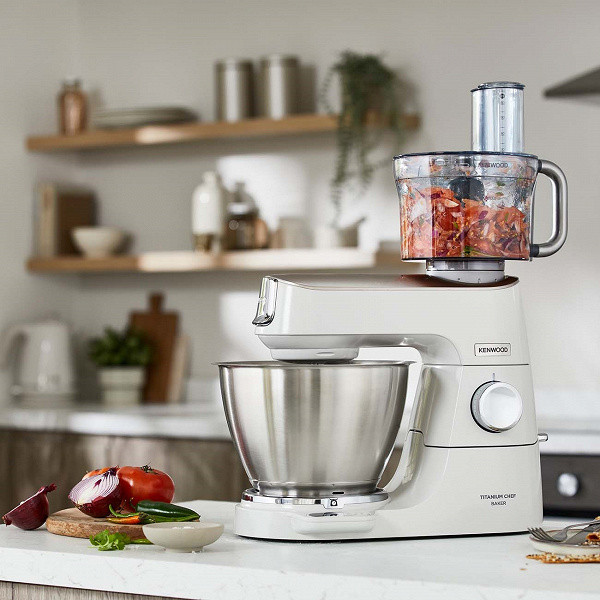
This breakthrough allowed Kenwood to become a competitor to KitchenAid, which invented the stand mixer and later began producing kitchen machines. Over time, the range of such devices based on planetary mixers has been expanded by many global brands, including Electrolux, Bosch, Moulinex, Smeg and others.
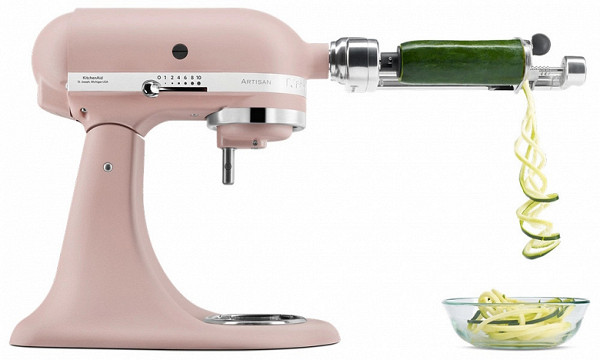
On the market you can find kitchen machines from well-known manufacturers such as Electrolux, Bosch, Moulinex and Smeg, which are positioned as premium (although our tests show that this is not always the case), as well as from companies aimed at middle-income buyers. such as Redmond, Kitfort, Garlyn, Polaris and others.

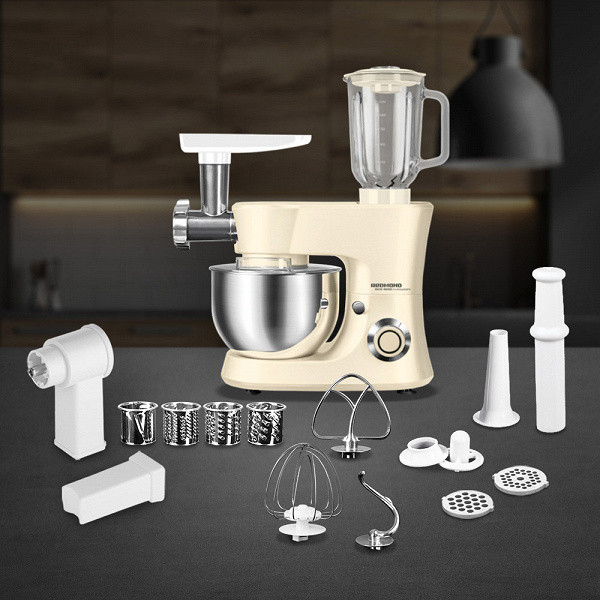
An innovation of the last decade is kitchen machines capable of preparing hot dishes, as they are equipped with an induction hob and a bowl with an induction bottom.
What attachments can a kitchen machine have and what tasks can it solve?
Actually planetary mixer
The set of kitchen machines always includes a bowl for planetary mixing (from 4 to 10 liters, depending on the model) and three classic attachments: a round whisk for whipping, a paddle for mixing and a hook for kneading thick dough.
In practice, all planetary mixers and kitchen machines we tested, regardless of price category, do an excellent job of kneading thick dough, beating egg whites, and quickly mixing ingredients.
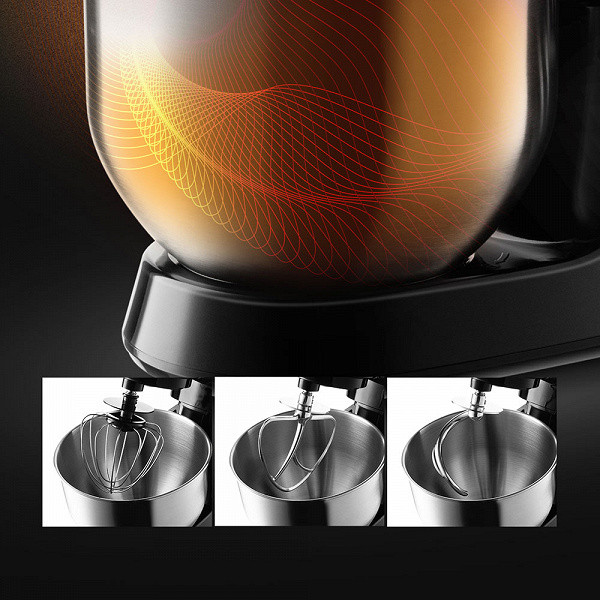
Meat grinder and blender jug
The socket for the meat grinder is located in the front part of the case, and for the blender — on the top. A meat grinder and a blender jug are the minimum set that turns a planetary mixer into a kitchen machine. The capabilities of many models are much wider, but usually any manufacturer has machines with both minimal and advanced configurations. The necessary attachments can be purchased separately, but one attachment for a Kenwood kitchen machine often costs more than a separate appliance with similar functions.
The main complaints about blender attachments and meat grinder attachments are their lack of power compared to stationary appliances. In addition, jug blenders often do not have enough volume (usually 0.7-1 liter, while conventional blenders have twice as much). Meat grinders in kitchen machines often do not have a reverse function, which allows you to turn the auger back to clear the veins. As a result, the meat grinders of kitchen machines (especially budget brands) only work well with soft meat without veins, while ordinary cutlet meat can be chewed.
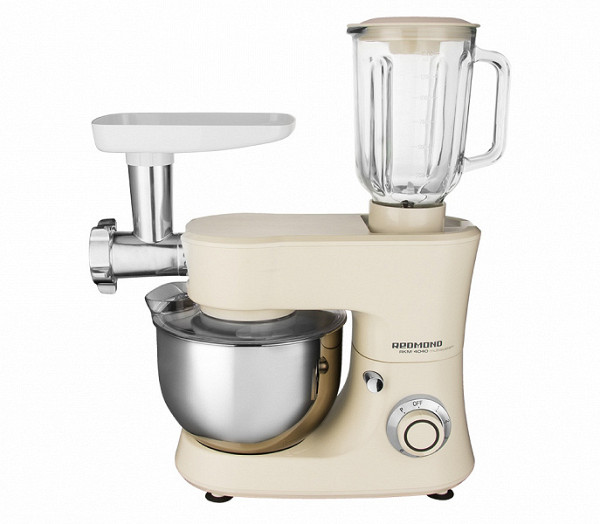
In practice, with the Starwind SKM8193 budget kitchen machine meat grinder (disc with 7 mm holes at maximum speed), we got 1.17 kg of minced pork, stripped of most of the veins, in just a minute. This model's blender with a normal volume (1.5 liters, glass) did an excellent job of preparing a homogeneous mass of tomatoes for gazpacho and made an excellent smoothie. Therefore, although there are complaints about attachments, it is important to consider the characteristics of a specific blender and meat grinder, and not make generalizations.
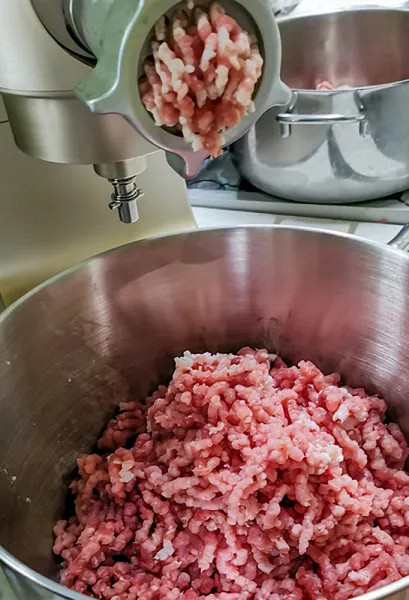
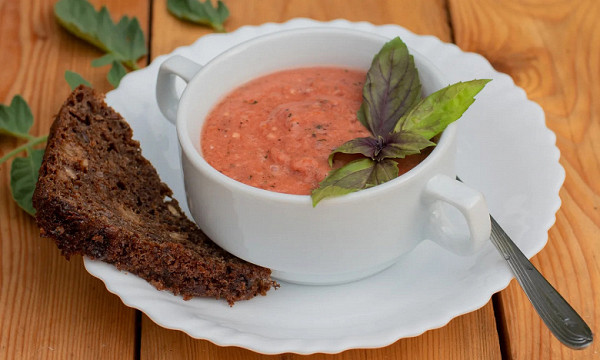
The productivity coefficient of the meat grinder attachment for the Lex LXMX 4101 kitchen machine was 0.857 kg/min, which is quite good even for a free-standing device. The blender of this model (1.5 liter capacity) even successfully copes with crushing ice, which allows it to be used for preparing dishes with frozen berries. The Redmond RKM-4020's meat grinder attachment achieved a performance coefficient of 0.9 kg/min, and it did an excellent job of tough, veiny meat, grinding 1.04 kg in 1 minute 8 seconds. This confirms that there are kitchen machines with quality meat grinder attachments, and they are more common than one might think.
In addition, meat grinders in kitchen machines are often equipped with attachments for preparing kebbe and sausages. For example, in the Redmond RKM-4020, nozzles are stored in the pusher cavity, which is convenient and does not take up extra space, providing additional opportunities for menu diversification.

Food processor or vegetable slicer
This attachment cuts into pieces of different shapes, rubs (including potatoes for potato pancakes), and chops using a blade-impeller and cutting discs, as in a regular combine.

There are models of vegetable cutters with direct feeding of the processed product into the dish, such as the Kenwood AT340, and attachments for cutting into cubes, for example, the Kenwood KAX400PL.
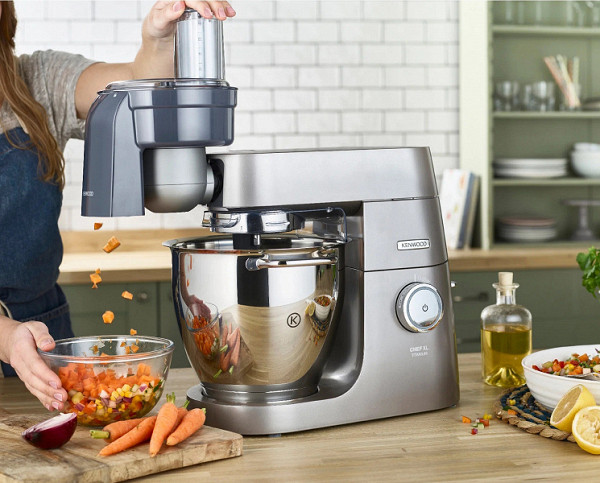
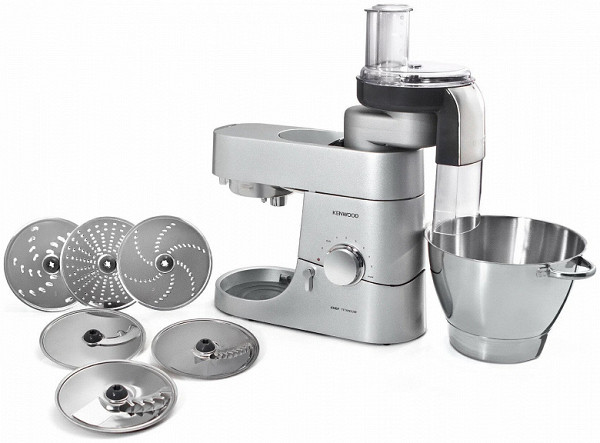
There are also drum vegetable cutters that chop food not using discs, but with special perforated cylinders. This is a more budget story.
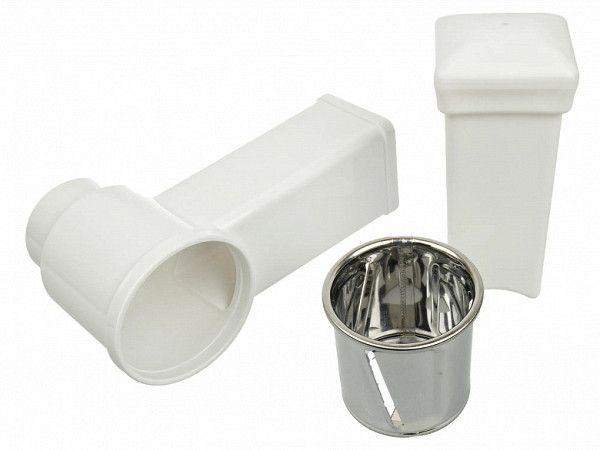
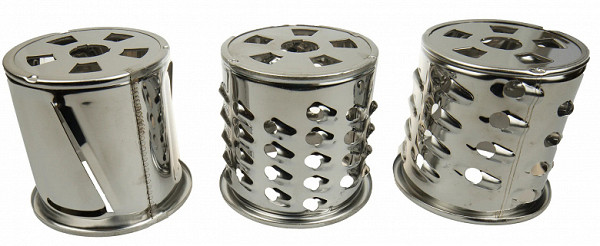
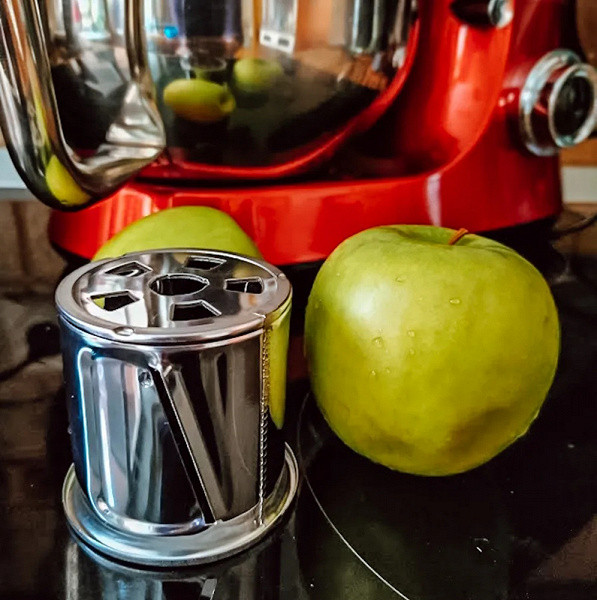
In practice, in the Lex LXMX 4101 model, the drums for the grater and shredder were not made very carefully (as can be seen in the photo), but at the same time they did a good job of chopping apples and excellently grating carrots.
Auger juicer
This attachment is necessary if you want to get thick juice from almost any berries (small seeds do not need to be removed), fruits (including citrus fruits), vegetables and herbs. An auger juicer is not intended for preparing large volumes of juice and processing crops. Since auger extraction does not require high speeds, such juicers in kitchen machines usually cope with tasks no worse than stationary models.

Citrus juicer
Citrus presses work great in kitchen machines (as we demonstrated with the example of the Bosch MUM5XW40 kitchen machine and the Kitfort KT-3413 6-in-1 planetary mixer), however, special purchase of such an attachment is impractical, since there are many very inexpensive stationary appliances that are also of high quality. perform the task, while they are compact and do not take up much space.

Dough attachments
Also worth mentioning are dough sheeters and dough cutters for creating noodles of various widths (with adjustable size) and a variety of pastes. These attachments are not available for all models of kitchen machines (for example, Kenwood and Bosch), but they work much more efficiently than mechanical devices for rolling and cutting dough. Such attachments are often used in restaurants and cafes for kitchen machines.
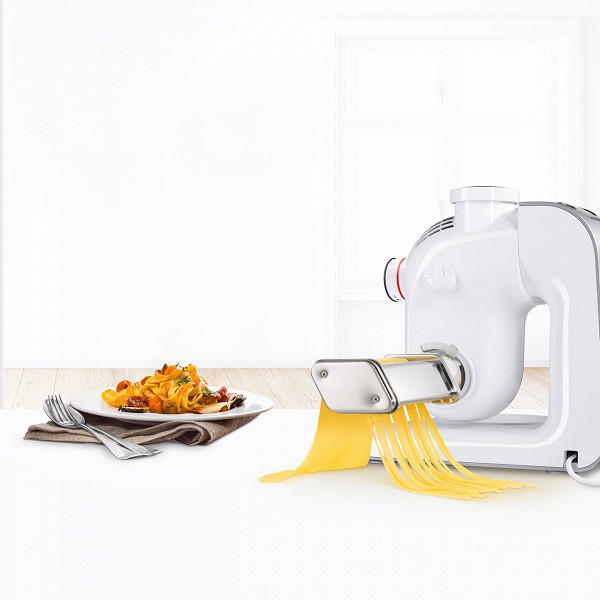
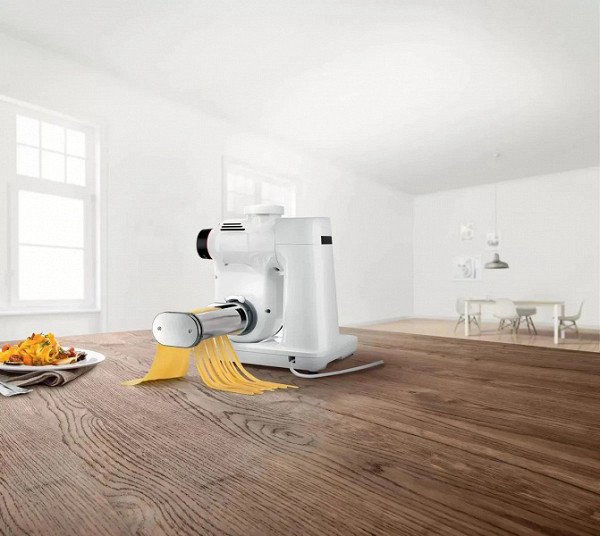
In practice, multi-cutter attachments in the budget and mid-price segments (which we most often test) often contain inserts for creating various types of pasta and cookies for the vegetable cutter attachment. They can be made of plastic, as, for example, in the Lex LXMX 4101 model.
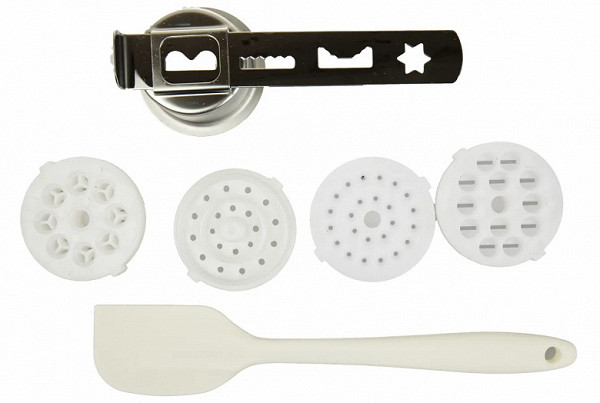
Or combined (with elements made of steel and plastic), as in the more expensive Redmond RKM-4020 model. This model comes with five attachments: two for thick pasta, two for thin, and one for noodles.

Other attachments
The list of attachments for kitchen machines, although not endless, is quite extensive. Most of the various attachments are designed for brands such as Kenwood, KitchenAid, Bosch and others. Although they are not necessary in every kitchen, they are purchased as needed, keeping in mind that their cost can be significant.
Among them you can find various grinders, including mills for cereals and grains; attachments for peeling, spiral cutting and coring vegetables and fruits; as well as ice cream bowls with double walls and refrigerant between them for making homemade ice cream (for example, from Kenwood). Some models, like KitchenAid's, also offer frozen yogurt maker attachments (sometimes even called «ice shave attachments,» but they're actually designed to shred frozen yogurt mixture).

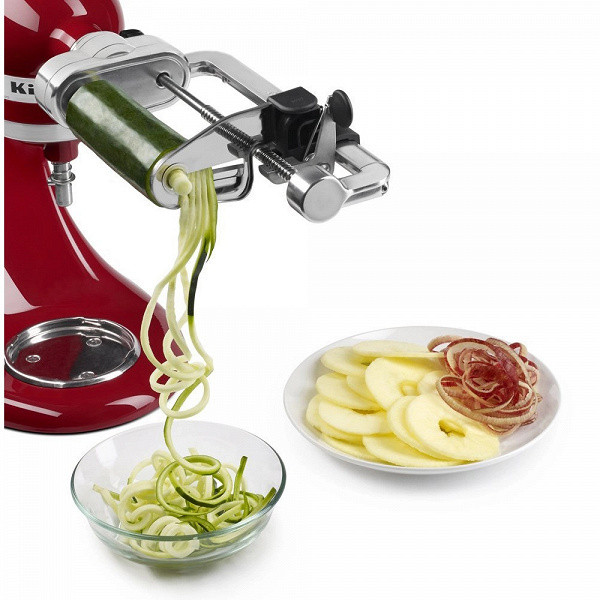

A universal grinder for spices, nuts, herbs and coffee (for example, from Kenwood) should be purchased additionally only if it is needed specifically for spices, nuts and similar products, but not for coffee. Positioning it as a coffee grinder, in our opinion, is unjustified: firstly, coffee requires a separate device to avoid mixing of aromas; and secondly, rotary grinding of coffee is not the best idea; it is much preferable to purchase a burr coffee grinder. And if you choose a rotary one, then for completely different money.
When choosing a kitchen machine, you should follow the principle of the wise Socrates, who, returning from the market empty-handed, joyfully declared that he did not need much of what was offered. It is important not to purchase a device with unnecessary functions, and you should be especially careful about the necessary attachments so that they are not only included in the kit, but also perform their functions effectively. To do this, we conduct testing and recommend what is worth purchasing and what may not be so useful.
